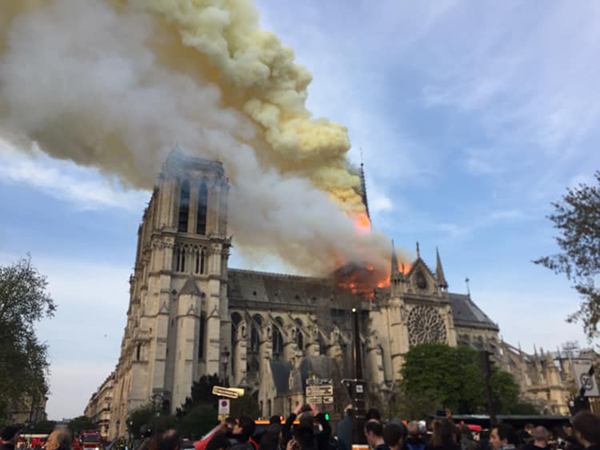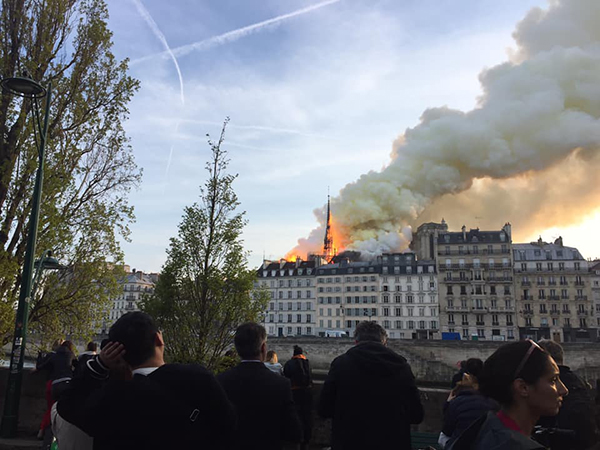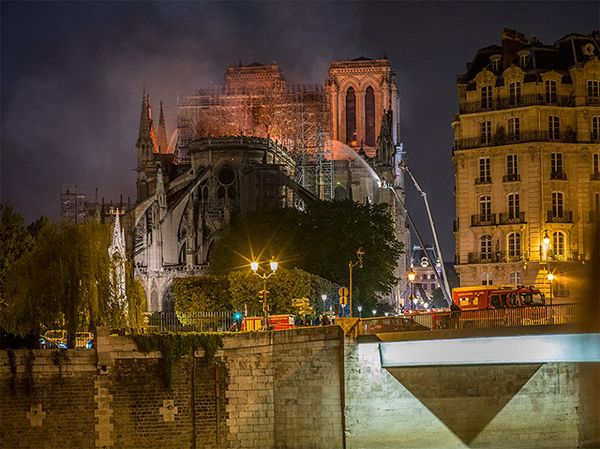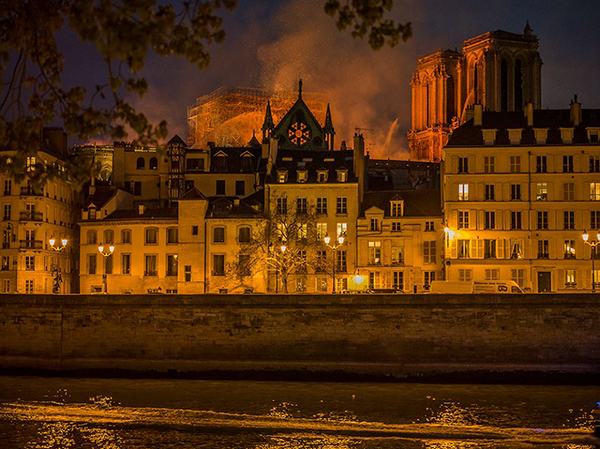Notre Dame de Paris, the great fire

On April 15, 2019 at 18:50, the world learned with horror that the iconic Notre Dame Cathedral in Paris was on fire. For Parisians, it was an unprecedented drama as well as a visual, emotional and psychological shock. The one stoic building that had withstood two world wars was transformed into ashes in a few hours. Thanks to the intervention of the Paris fire brigade, the towers of Notre-Dame remained unscathed, as well as the sacred Rose stained glass window, and much of its structure was saved.

In 1163, Bishop Maurice de Sully decided to implement this tremedous project which was incredibly ambitious at the time, the construction of which would last nearly two centuries. Notre-Dame de Paris was the largest religious building in the West until the middle of the 13th century, before the construction of the cathedrals of Amiens and Reims. His design shows great creativity in the purest Gothic style. In the 1230s, the upper parts were redesigned in a new style - the radiant Gothic style - to allow in more light for the choir.
During the Revolution of 1789, the statues were mostly destroyed. The bells were melted down, worship was abandoned... Ironically, it was Robespierre who saved the cathedral from destruction by establishing the cult of the Supreme Being.

In 1831, famous author Victor Hugo was so distressed by the state of abandonment into which the cathedral had fallen into, that he wrote a novel - the world-famous Notre Dame de Paris, which followed the trends of the time for medieval aesthetics. Hugo builds a dramatic plot in the heart of medieval Paris, the Isle de la Cité and the nearby Marais, and he portrayed the life of the common people of Paris in the fifteenth century. An important part of the novel takes place in the towers of the church and pride of place is given to the bells and their resident ringer Quasimodo, who falls in love with the beautiful Esmeralda.
Victor Hugo took part in the important campaign which led to the restoration of Notre Dame from 1845. The architects Viollet-le-Duc and Lassus are responsible for the restoration of Notre Dame as they recomposed the carved decoration. Viollet-le-Duc accentuated the medieval style by adding to Notre Dame a number of neo-Gothic decorations and a new spire at a height of 93 metres. This was the birth of a patrimonial interest and was here that France started to establish policies for the safeguarding of national monuments.

In 1968, under the ministry of André Malraux, who saved the Marais from destruction in 1962, the first major renovations of the cathedral were undertaken. Then more renovations were carried out in the 1980s, under the leadership of minister for culture Jack Lang, who delegated the management of the last restoration to Bernard Fonquernie, Chief Architect of National Monuments. In 2013, the old bells were replaced by new ones and placed on show during a week for Easter in the centre of the cathedral ... The upkeep of a cathedral requires construction and continuous maintenance.
Notre Dame will rise again, and will, before the Olympic Games of 2024, be more beautiful than ever” declared President of the Republic, Emmanuel Macron. If it is indeed a common subject that unites the French people beyond all divisions, it is most certainly that of our wonderful heritage, which shines around the world.
Below are some unpublished photos taken over time by our team, friends, the photographers at the Paris Tourist Office and Marianne Ström, the patrimonial photographer of le Marais, alongside whom we suggest that you donate towards the restoration of "Notre Dame of the Whole World".





.jpg)

